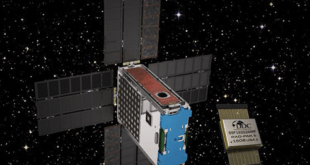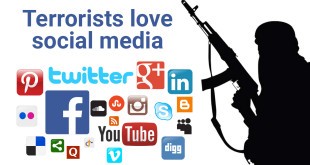Introduction: In recent years, the field of swarm robotics has witnessed remarkable advancements, opening up new possibilities for addressing complex challenges. The Defense Advanced Research Projects Agency (DARPA) has been at the forefront of these efforts, leading the way in developing innovative technologies to enhance military capabilities. One such initiative …
Read More »TimeLine Layout
August, 2023
-
4 August
Unleashing the Power of Drones: The Exponential Growth of the Global UAVs Market across Civil, Commercial, Military, and Security Sectors
Introduction Unmanned Aerial Vehicles (UAVs), commonly known as drones, have revolutionized the aerospace industry. These aircraft, without a human pilot on board, have become integral components of unmanned aircraft systems (UAS), which encompass a UAV, a ground-based controller, and a communication system between the two. Initially designed for missions deemed …
Read More » -
3 August
Unleashing Terahertz Potential: DARPA’s NanoSim Redefining Nanoscale Device Development
Introduction In the vast realm of technological advancements, one area that has captivated the attention of scientists and researchers is the realm of terahertz (THz) technology. With its promise of unprecedented data transmission speeds and sensing capabilities, terahertz has the potential to revolutionize various industries, including telecommunications, healthcare, and security. …
Read More » -
3 August
5G Dominance: Unveiling the US Military’s Strategic Leap and the Rise of a 5G Arms Race
In a bold move that marks a significant shift in the landscape of modern warfare, the United States has officially launched its 5G military strategy, declaring the race for 5G dominance as a new arms race. This development is set to reshape the future of military operations, with profound implications …
Read More » -
2 August
DARPA JUMP 2.0 Consortium developing Microelectronics for advanced radar, communications, and weapons systems
DARPA pursues game-changing technologies and capabilities in a way that provides a surprising advantage for U.S. and Allied warfighters and at a much faster pace than the state of the art. DARPA’s work with the Services and other agencies aims to meet not just known but as-yet unrecognized needs and …
Read More » -
2 August
High Reliability and Radiation-Hardened Memories: Safeguarding Data for Space and Aerospace Applications
Introduction In the realm of space exploration and aerospace technology, the reliability and integrity of data are paramount. The extreme conditions of space, including high radiation levels and temperature variations, present significant challenges to electronic systems. To ensure the safe and accurate operation of critical systems in these harsh environments, …
Read More » -
1 August
DARPA FS2 Advancing Threat Detection and Warning Capabilities to Safeguard Crop Health
Introduction: Cereal crops like corn, rice, and wheat are vital for feeding millions of people worldwide. However, the threat of pests and diseases poses significant risks to global food systems, impacting crop yields and leading to food shortages. Addressing these challenges is crucial for ensuring food security and stability. The …
Read More » -
1 August
Harnessing Artificial Intelligence and Data Analytics to Combat Terrorism on Social Media: Promoting Cross-Platform and Transnational Cooperation
In today’s digital age, social media platforms have become powerful tools for communication, information sharing, and social interaction. However, they have also become breeding grounds for extremist ideologies and terrorist propaganda. To counter this alarming trend, the integration of Artificial Intelligence (AI) and data analytics is emerging as a promising …
Read More »
July, 2023
-
31 July
Advancing Military Health: DARPA AIM’s Quest for Long-lasting Vaccinations for Service Members
Introduction: The health and well-being of military service members are of paramount importance. To ensure the protection of personnel in challenging and dynamic environments, the Defense Advanced Research Projects Agency (DARPA) is at the forefront of groundbreaking medical research. One of their ongoing initiatives, the Active Immunization (AIM) program, is …
Read More » -
31 July
Unleashing the Power of Modular Quantum Computers: Towards Large-Scale Programmable Quantum Computing and the Quantum Internet
Introduction Quantum computing has emerged as a groundbreaking field that promises to revolutionize the way we process information and solve complex problems. Among the exciting advancements in this realm, modular quantum computers have taken center stage. These modular systems offer the potential to scale up and unlock the possibilities of …
Read More »
 International Defense Security & Technology Your trusted Source for News, Research and Analysis
International Defense Security & Technology Your trusted Source for News, Research and Analysis




